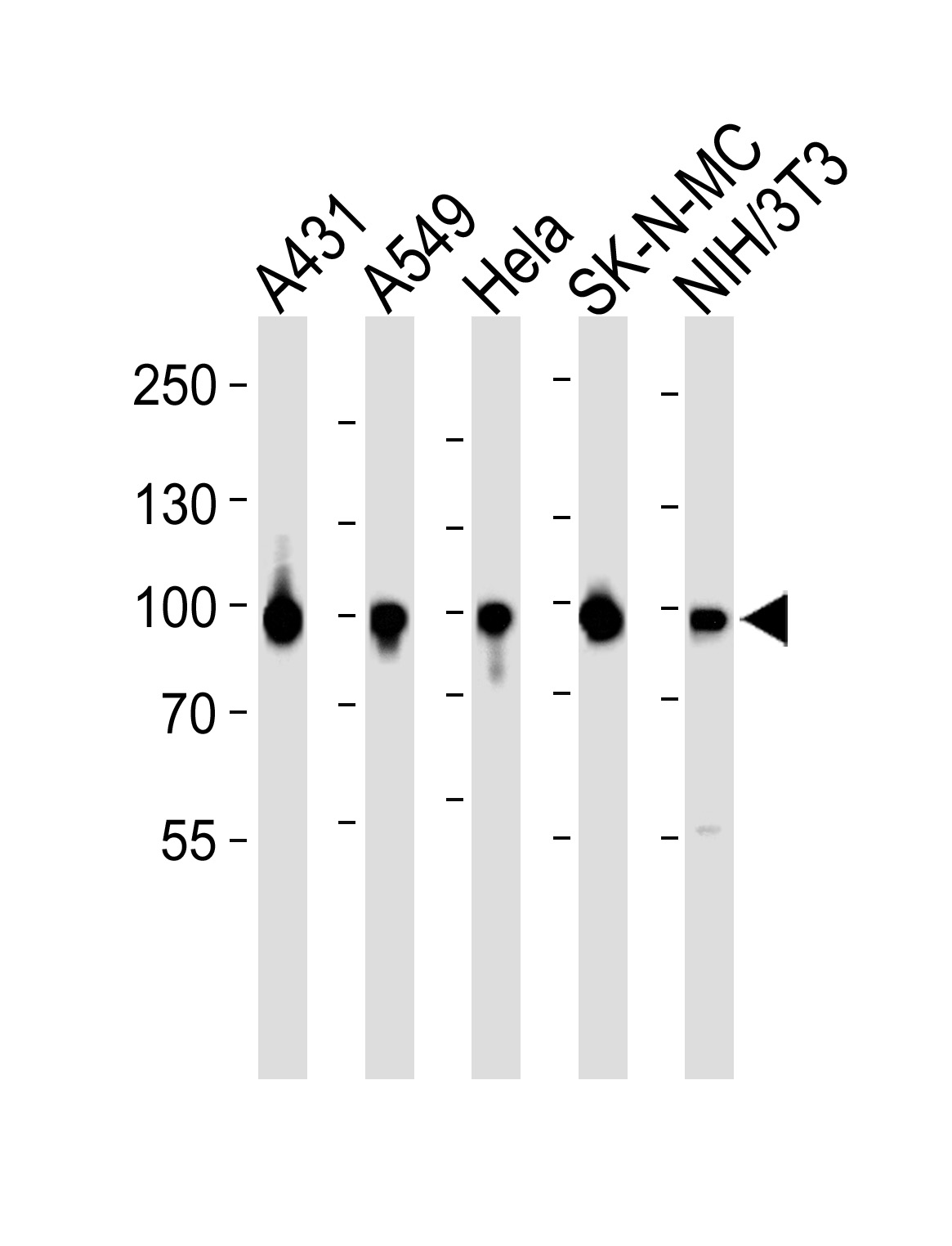


 收藏
收藏
| 规格 | 价格 | 货期 | 数量 |
|---|
 |
Western blot analysis of lysates from A431, A549, Hela, SK-N-MC, mouse NIH/3T3 cell line (from left to right), using HSP90 Antibody (Center)at 1:5000 dilution was used as the secondary antibody. Lysates at 35ug per lane. |
 电话咨询
电话咨询
 在线咨询
在线咨询
 QQ
QQ
 二维码
二维码
 扫码二维码
扫码二维码